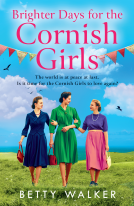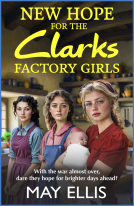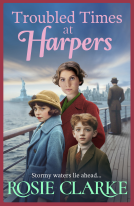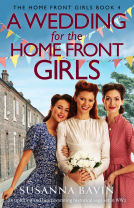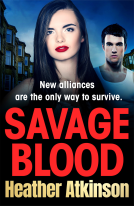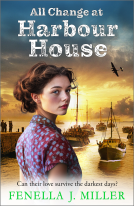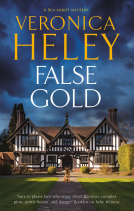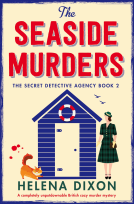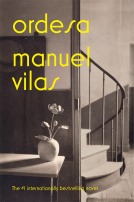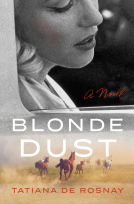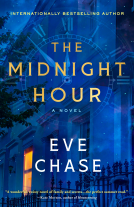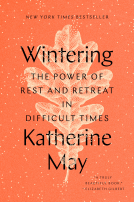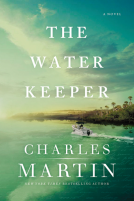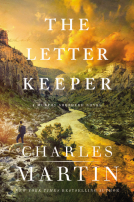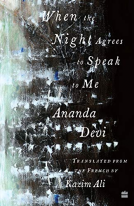
Talland House
A Novel
by Maggie Humm
This title was previously available on NetGalley and is now archived.
Send NetGalley books directly to your Kindle or Kindle app
1
To read on a Kindle or Kindle app, please add kindle@netgalley.com as an approved email address to receive files in your Amazon account. Click here for step-by-step instructions.
2
Also find your Kindle email address within your Amazon account, and enter it here.
Pub Date Aug 18 2020 | Archive Date Sep 12 2020
Talking about this book? Use #TallandHouse #NetGalley. More hashtag tips!
Description
Set between 1900 and 1919 in picturesque Cornwall and war-blasted London, Talland House takes Lily Briscoe from the pages of Virginia Woolf’s To the Lighthouse and tells her story outside the confines of Woolf’s novel—as a student in 1900, as a young woman becoming a professional artist, her loves and friendships, mourning her dead mother, and solving the mystery of her friend Mrs. Ramsay’s sudden death. Talland House is both a story for our present time, exploring the tensions women experience between their public careers and private loves, and a story of a specific moment in our past—a time when women first began to be truly independent.
A Note From the Publisher
Advance Praise
*** Shortlisted for the Impress Prize, Fresher Fiction Prize, Retreat West Prize and Eyelands Prize ***
*** Longlisted for the Lucy Cavendish and Historical Writers' Association, Sharpe Books Unpublished Novel Awards ***
“Maggie Humm has brilliantly filled in the edges beyond Woolf’s canvas; she has a deep, awe-inspiring understanding of the role of the visual in Woolf’s work, and here she reveals that she also has a novelist’s gift to create something new, that has its own imaginative life, from that understanding.” ―Lauren Elkin, award-winning author of Flaneuse
“I’ve really enjoyed Talland House . . . the novel is written with such a painterly eye I felt as if I too was seeing the world through Lily Briscoe’s eyes. It is a wonderfully visual novel and the Cornish scenes are gorgeously evoked.” ―Annabel Abbs, author of the award-winning The Joyce Girl and Frieda
“Evocative of Woolf’s To the Lighthouse in the way [Humm] represents the tensions between nostalgia and the passing of time. The primary setting of St Ives in Cornwall is beautifully depicted and subtly realised, without resorting to cliché or relying on Woolf’s vivid descriptions, creating a language of the writer’s own. . . . The atmosphere of the novel is dreamy. . . .” ―Historical Writers Association
“It’s evocative and engaging, sweeping landscapes simmering next to psychological interior exploration. Picturesque Cornwall and busy London are the backdrop for a young woman growing up, and an older woman reflecting back. We’re treated to details about the captivating Lily Briscoe and her relationship with herself, her art, and the women and men in her life. It’s a great read, from a clearly very knowledgeable writer.” ―Francesca Baker, book reviewer at AndSoSheThinks.co.uk
“I hope that Maggie Humm knows that every time I read her work, I’m so startled by its brilliance all over again.” ― Amy E. Elkins, writer for PMLA, The Los Angeles Review of Books, Journal of Modern Literature, Tulsa Studies in Women’s Literature, South Atlantic Review, and The Space Between: Literature and Culture 1914-1945
Available Editions
| EDITION | Other Format |
| ISBN | 9781631527296 |
| PRICE | $16.95 (USD) |
| PAGES | 256 |
Featured Reviews
Lily Briscoe is a woman caught in the time period when all that was considered correct for a female was to be married and look after her family, however, she was a spinster, a woman who loved with her whole heart, but perhaps it could be said that she loved the wrong people who were never available to her. She was a woman who lived to a certain extent what was expected of her by looking after her elderly father, but she was brave enough to find meaning in her life through her art as she grew into adulthood and the new independence women enjoyed after the Victorian period.
This novel has been written to explain the possible reasons for the death of Mrs Ramsay, a much-loved character in Virginia Woolf’s book To the Lighthouse, it follows the life of Lily Briscoe as a youthful student of art to grown woman ranging in the time frame of 1900 to 1919. We follow Lily’s journey from a young impressionable art student at St Ives in Cornwall, where she meets both the Ramsay family with the gentle Mrs Ramsay who she begins to see as a substitute mother and woman to emulate and the ever-volatile Mr Ramsay alongside Louis Grier, the effervescent art teacher who she develops a lasting crush on. During the intervening years, Lily becomes both a suffragette and works as a nurse in London during World War One with all its brutality and sometimes beauty. Through it all, Talland House, the summer house of the Ramsay’s is the touchstone to Lily and her hopes for the future. After the war Lily, now a grown woman with a certain level of success as an artist unexpectedly discovers that Mrs Ramsay has died in an apparently questionable manner, with all suspicion falling on her husband. Lily is determined to find the truth to the passing of her beloved mother figure, but nothing is as she held to be true in her heart over the course of so many years, and answers lead to further, perhaps deeper understandings of her own life and its meaning.
This novel is not a ‘piece of fluff’ to be read easily whilst enjoying a summer day by the beach but rather it requires concentration from the reader, but the payoff for this level of concentration is well worth the commitment as the story unravels as an “I wonder what” is answered. It has beautiful prose, such as “Lily wanted the minutes ahead to stretch out before her like of roll of velvet.”, which is rich in visual imagery to powerful imaginings of domestic violence and its effects on the victims such as
“Why on earth did he throw the plate?”
“Probably an overcooked egg,” Eliza said. “Poor soul. She carries the weight of Mr Ramsay’s explosions. It’s draining her. You must have seen how drawn and pallid her face has become since we first arrived at Talland House. Sometimes her head resembles a skull, her eyes as so deep-set.”
Nothing is as it seems, and Lily is to a large extent, quite the innocent babe in the world, shocked at the behaviour of men in many different situations and the relationships people forge that deviate from the societal expectations that she herself carries around. It is a thoughtful piece on the growth of a woman emotionally and developmentally. It is a study of a woman coming into her own in a time when women were just starting to experience independence in any true manner and it reveals that there are issues that are truly as old as the hills.
Charming.
 Andrea H, Book Trade Professional
Andrea H, Book Trade Professional
My thanks to Maggie Humm, She Writes Press, and NetGalley for the ARC of TALLAND HOUSE.
Talland House is set in the years before the First World War and during 1914 -1918, and documents the life of a young woman, Lily, who has had a sheltered upbringing, but wants to be an artist. She is clearly aware that to be so she must broaden her horizons, so goes to Paris for tuition, and then St. Ives in Cornwall where she meets Louis, a tutor, a fellow artist, and a man she comes to love. He occupies her thoughts at every turn of her life. She wonders why, when he had the opportunity to kiss her he doesn't as his interest appears to match hers.
During her stay in St. Ives, she meets Mrs. Ramsey who reminds Lily of her mother, deceased, the death of whom haunts her. She becomes very close to Mrs. Ramsey and her family and is often invited to Talland House, where she paints and meets other artists. Mrs Ramsey's husband appears to be a bad-tempered, explosive man with little control, and Lily and her friends are concerned at his treatment of his wife. Fast forward twenty years and Lily is exhibiting at The Academy, a painting of the dahlias in Mrs. Ramsey's garden. She is surprised to see Louis at the exhibition, and it is on this occasion he delivers some devastating news.
A beautifully written novel, with language that sweeps the reader to the harbour of St. Ives and the garden at Tallon House. There was some repetition, the similarity between Lily's mother and Mrs. Ramsey was pressed, but a minor thing. Recommended
If you like historical books romance this is definetely for you. Love how she was nurse suffraget and then her love of Louis
 Betsy E, Reviewer
Betsy E, Reviewer
We follow a young lady named Lily starts off taking art at the Talland House. There she meets Louis and her friend Eliza.
Things are going well for Lily until war starts turning her life around. She finds herself in the nursing field. During this time she thinks about Louis to get herself through the hard time of war and realizing how much she misses him.
As war drags on Lily's love for Louis never fades even through the long hours of working at the hospital. One December was devastating as they were told the war supposed to end but it didn't. Lily found herself accepting the fact the war may never end and became a part of her life. Until one day the big announcement was made that war was officially over.
Lily finally got to see Louis. Instead of finding the true love of her life an unexpected twist in the end made Lily comes to terms with reality that even if things do not work out as she had planned, she came to find something more in life to accept to fill the whole she so longingly was finding to make her happy.
Such a charming story. I like a story that reminds people that it is ok to not find love but to find love in a different way to fill a whole in your life. You don't need love from a man to make you happy you can find other ways to fill the whole in your life to make yourself feel happy. I highly recommend this book. I gave this a 4 because there were certain times in the story that took me awhile to figure out what was going on but once I did I really enjoyed it. I especially loved the message at the end of the story.
 Librarian 253116
Librarian 253116
This is a lovely book to be savored. The author explores issues of the early 1900s that women still experience today. After reading this I definitely want to re-read To the Lighthouse.
This is a great novel of a woman that tries to live an independent lifestyle in a time when women were expected to leave their parents' home and get married and start their own families. Lily's journey is full of love and loss, but her strength keeps the reader rooting for her to succeed in her dream of being an artist.
 Reviewer 98309
Reviewer 98309
Talland House is my first introduction to Maggie Humm writing. I thought it was a pretty good piece of historical fiction. The historical details were so vivid, I felt like I was transported back in time living among the characters. I enjoyed the mystery and suspense involved in it, as well.
I am giving Talland House four and a half stars. I recommend it for readers who love historical fiction, particularly World War I era England. I would love to read more like this one by this author in the near future.
I received this book from the publisher, but was not required to write a review. This review is 100% my own honest opinion.
I found that not remembering a lot was actually a great thing because I could fall in love with these characters all over again. I loved the dynamic between Lily and Mrs. Ramsay, the way that their relationship developed throughout the novel. Lily is vibrant and Mrs. Ramsay is wise. They balance each other out well. The only thing I would say, is that their relationship as painter and model is sort of taken for granted, which makes sense as Talland House is based on/develops from To the Lighthouse. Without this prior knowledge, things might feel a bit rushed for a new reader, however, I found them both precious and loved re-learning their connection.
One thing I absolutely adored is Humm’s prose. The way she wove art and the artist’s eye into the narrative was beautiful. My favourite scenes were those where Lily takes in the surroundings, for example, Lily looks at Mrs. Ramsay’s dining room, ‘…The dining room filled with mauve. It was the boundary of evening, the moment when things change, colours become deeper and the future denser but somehow more tantalizing’. These are the strongest parts in the novel, and I felt like it was gesturing towards Woolf’s narrative style. Whether this was intentional or not I’m not sure, but I felt like this was part of the beautiful and subtle nod towards the original story.
Talland House takes inspiration from Virginia Woolf's, To the Lighthouse. You will also be surprised to know that Talland House is also where Woolf spent 13 summers with her family.
Centering on Lily Briscoe’s coming-of-age and offering a plausible resolution to one of the twenty-first century’s greatest literary mysteries - the sudden death of Mrs. Ramsay - Talland House partly follows the time structure of Woolf’s novel, but weaves into this frame a prequel, and many fictions of Woolf’s life including her family, the artists and friends she knew, and Lily’s fictionalized life and career outside of the novel.
The book was a beautiful description of the town of St. Ives and the life of the protagonist Lily. The entire story revolved around Lily, Mrs, Ramsay and of course the Talland House. It's a very slow paced book going back and forth between the present day life of Lily and the of her time before and during the first World War.
Many a times you may almost feel like Lily thinks too much but I feel that is an apt depiction of her artistic mind. The character development of Lily is also appropriate to a time when women in the western world were trying to become independent beings.
The book will take you through her journey as a student in Paris, to a student in St. Ives where she first meets Mrs. Ramsay, to journey of coming back to Talland House as an artist, as a suffragette, as a nurse during World War 2 and finally having her artwork being displayed at the Royal Art Gallery being almost lost and clueless through it all.
The story carries with itself the mystery of Mrs. Ramsay's death and Lily's determination to complete her portrait as well as figure out the reason behind he sudden untimely death which gives you something to look forward to. If you have an interest in art, you'll also be in awe of the artistic descriptions in the book because I sure was.
I rate the book 3.5 bookmarks out of 5 because of the slow pacing of the book, of course the book has instigated and even inspired me to look into more of Virginia Woolf's works, but this title itself could've been slightly fast paced as some details felt unnecessary.
This book is full of artistic descriptions and lots of colors. This takes place when the women of the world are beginning to realize that they should have a say in their lives. This book shows how Lily learns to become an artist and she grows as a person over the years. I enjoyed all the characters and the way this was written. This shows how these women blossom. I received a copy of this book from Smith Publicity for a fair and honest opinion that I gave of my own free will.
 Mystica V, Reviewer
Mystica V, Reviewer
London 1919. Lily is a very mixed up woman. Torn between her love for her tutor Louis and then her love for the lady whom she considers a mother Mrs. Ramsay, she is heartbroken to overhear that her half done portrait of the lady is not pleasing to her. For Lily has put her heart and soul into this painting and this almost destroys her.
The story with its strong connections To the Lighthouse by Virginia Woolf draws its world from St Ives in Cornwall and London and the ten missing years of the story. Lily Briscoe was very much part of the Woolf scene visiting the Isle of Skye before the War, then during the War and then after the War returning to Skye after the death of Mrs. Ramsay.
The feeling of such a close connection between Lily and Mrs. Ramsay - almost spiritual despite the aggressiveness of the Mr. Ramsay in the story. Lily's unfortunate love for Louis which was never reciprocated because as she discovered at the very end that he was gay are very well enumerated in the story.
The book mixes historical fiction, as well as actual history with a lot of imagination and combines all the elements to give you a very factual story.
I read this for a blog tour.
Inspired by Virginia Woolf's To The Lighthouse, and partly set at Talland House, which Woolf's family rented when she was a child, this story fleshes out the details Woolf left out of her own narrative - primarily the death of Mrs Ramsey.
A beautifully written, lyrical meditation on art, the particular light of St Ives, families, women, war and love.
Following Lily Briscoe from her days as an art student, then as a Queen Alexandra's nurse in WWI (as was my own great-grandmother), we encounter the seismic changes in society in the early years of the 20th century. Lily is present when a suffragette slashes a painting in protest of the government's treatment of Emmeline Pankhurst.
Her fascination with Mrs Ramsey never really wains, she thinks of her often, even though years pass by without them meeting. I was reminded of the similar relationship in Howards End, where Margaret is fascinated by Mrs Wilcox.
The novel evolves in its final third into a investigation of Mrs Ramsey's death. Lily suspects foul play, the suddenness of it seems suspicious, and she enlists her pharmacist friend after the cleaner and cook give her a small bottle found among Mrs Ramsey's things. Shades of Agatha Christie, herself a pharmacist in the war.
I found this book deeply fascinating and strangely moving. St Ives is a place I've visited and I could picture it in my mind as Lily painted on the quayside and strode around the town with her friends.
Even if you're not a fan of Woolf, this is very enjoyable and readable, Woolf isn't present in the pages and the author really makes the characters her own
 Educator 708234
Educator 708234
Excellent book. Couldn't put it down! I enjoyed the historical details and also loved the mystery aspect. Will be recommending this book.
This book of historical fiction will be welcomed by those who enjoy stories about women trying to find their way in the world. The main character, Lily is an artist and a product of her times; she is aware of the expectations for women and what she wants for herself. Given the time frame of the story, readers learn more about nursing during the Great War and the movement for women’s right to vote.
With a bow to Virginia Woolf’s Mrs. Ramsay, Lily becomes involved in wanting to understand what led to her demise. Mrs. Ramsay was a key figure to Lily who painted a portrait of her that was not completely well received by its subject. In addition, the reader watches Lily as she falls in love with her tutor, Louis.
There is a lot going on in this well-told narrative. I enjoyed the book’s Cornwall setting, the characters and the insight into women’s lives at that time. I also admire the author’s understanding of Virginia Woolf’s To the Lighthouse and how this was incorporated into the story.
Many thanks to NetGalley and the publisher. All opinions are my own.
